BY MIKE METTLER
“I didn’t have the courage to go back to any of the masters and try to recreate those beautiful, real echoes,” says Justin Hayward of The Moody Blues about the surround-sound mixes he supervised for six of The Moodies’ “Classic Seven” albums: Days of Future Passed, On the Threshold of a Dream, To Our Children’s Children’s Children, A Question of Balance, Every Good Boy Deserves Favour, and Seventh Sojourn. (In case you were wondering, there weren’t any multitrack masters available for In Search of the Lost Chord.) All six of those 5.1 mixes — done by Paschal Byrne and Mark Powell and built on the original quad mixes supervised by producer Tony Clarke and constructed by engineer Derek Varnals — appear in Timeless Flight (Threshold/UMC), the band’s mighty, 50-year-career-spanning 17-disc box set. Yes, there is a more economical 4-disc version available, but the mondo box is the only way to fly in 5.1 — if you can find one, that is. “I think Universal needs to press a few more copies,” chuckles Hayward.
After recently speaking with former Moodies keyboardist Mike Pinder about the band’s surround-sound proclivities, it seemed only natural to check in with their chief songwriter and lead singer to get his take on how the sound-quality threshold has changed over the years.
Here, Hayward, 67, and I discuss the shift from one to two channels, the birth of FM, his favorite recordings, and his top Moodies-in-5.1 moments. Timeless indeed.
Mike Mettler: As an artist first recording in the ’60s, how did you feel about the transition from mono to stereo?
Justin Hayward: Well, I didn’t even have a stereo unit until around the time of A Question of Balance [1970]. I couldn’t afford one, and I didn’t have space in my little apartment. I was stuck with my Dansette record player. It was when I came to America with The Moodies that I understood how important a good stereo spread was. With the birth of FM radio, all those disc jockeys were crying out for stuff mixed like ours was, instead of stereo recordings with the drums mixed on the right and vocals on the left. And then, of course, you can’t go back. But that didn’t stop me from loving what I had, my old Dansette, and appreciating the mastering of those old singles.
Mettler: Speaking of singles, what was the first record you bought as a kid, do you remember?
Hayward: There were two: “See You Later, Alligator,” by Bill Haley & His Comets [released February 1, 1956] and “Dream Lover,” by Bobby Darin [#1 in the U.K. in July 1959]. We’d go to other people’s houses and play them on their record players, as I didn’t have one at the time. Those were the two I’d take around with me, and we’d all sit around and enjoy those. Those were wonderful times.
Mettler: Was there a record you bought that made you consider, “This is something I want to do”?
Hayward: The Buddy Holly Story, Vol. II, the one with the picture of him with the kind of faraway look in his eyes. [Vol. II was released posthumously in April 1960; Holly died February 3, 1959 in a plane crash in Iowa.] That was the finest thing I’d ever heard. I particularly liked the overdubbed tapes of what he’d done in New York. [a.k.a. The Apartment Tapes, songs recorded in Holly’s New York apartment on an Ampex tape recorder in December 1958.] I quite like the way he did that.
Mettler: You listen to the recording quality of songs like “Well, All Right” and “Not Fade Away,” and they still hold up now. He really had his ear on something. And look where it took you — right into a different universe.
Hayward: [laughs] Well, we were very lucky to have a record company like Decca, who believed in excellent recording quality, and London Records, who had their own pressing plant and made quality products.
Mettler: The Moody Blues really helped define the scope and reach of FM radio here in the States. Do you remember hearing one of your songs on the radio in America and getting a sense of what other people were hearing and connecting with?
Hayward: Absolutely. It was a great opportunity for us. We didn’t have FM in the U.K. for so long, but the Americans were well into it. And once the walls had come down, they were totally into it. Of course, you still had AM stations, which were still great. But with that little bit of compression, it always sounded pretty good to me on an FM station.
Mettler: Let’s talk about surround sound. Is there one song or album in the catalog that you would cite as the best example of the full-on 5.1 experience?
Hayward: Yeah, that’s a tough one. I didn’t have the courage to go back to any of the masters and try to recreate those beautiful, real echoes. But it’s still Days of Future Passed that hit it the most. All of the time we were mastering it, I was thinking, “How the hell did we do that?” There’s a song on there called “Dawn Is a Feeling,” where Mike [Pinder] got the mellotron just right.
Mettler: Working with production people like [producer] Tony Clarke and [engineer] Derek Varnals certainly helped get the best out of your sound.
Hayward: Oh, they were really superb. Derek Varnals — I have to credit him with my guitar sound in the early days. On those early records, I played acoustic and electric. He captured all of that just beautifully. I’d put the acoustic lines down first, and then we’d do the electric stuff, maybe with the other guys playing at the same time.
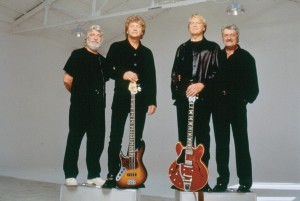
Keyholders to the Kingdom: Early-’90s Moodies, from left — Graeme Edge, John Lodge, Justin Hayward, and Ray Thomas. Photo courtesy Universal Music Group.
Mettler: Are there a few particular examples of Derek capturing just what you were looking for?
Hayward: There’s a song called “It’s Up to You” [on A Question of Balance], where he suddenly nailed it down, and “The Story in Your Eyes” [on Every Good Boy Deserves Favour], which has some exceptional guitar sounds. I was playing them flat-out. He wanted me to play standing in front of the amplifier, a Vox AC30, turn the normal channel up full, and blast it out. That was the sound.
Mettler: And by the time you get to recording a song like “Question,” Tony and Derek have clearly mastered how to capture your acoustic guitar sound on tape.
Hayward: We owe them both a great debt. I still see Derek occasionally. He hasn’t changed.
Mettler: I spoke with Derek for a good 2 hours or so last year, and he was quite generous in sharing the minutiae of recording at Threshold Studios and what he did for the quad mixes; all of those little details. For him to be able to capture and share the full effect of what you poured your heart and soul into recording is just fantastic.
Hayward: I think the quality of engineering went backwards after that. In the ’60s, you had these well-trained engineers, but when people started doing their own things in their own studios — “Ah, I think I can do this!” — they didn’t have the same kind of training. It came down to the stuff being done in the U.S. by the Eagles and Jackson Browne to really bring that quality of recording back again.
Mettler: Good point. In those days, the engineers were doing essentially an apprenticeship with the producers, doing everything hands-on in the studio, learning all the ins and outs. Guys like Glyn Johns —
Hayward: Right. And producer Tony Visconti, who worked with us on “Your Wildest Dreams” [for 1986’s The Other Side of Life], was an engineer. There was no other engineer in the studio.
Mettler: Besides the Eagles and Jackson Browne, what other artists made records that sound great to your ear?
Hayward: Well, of course, the kings of that were Steely Dan. Most people would say that. Their stuff was mastered so beautifully, mastered tastefully and not too loud, with the full frequency range. I think the things that were happening in California, a process started by Buffalo Springfield and then Poco, was a really tasteful kind of business.
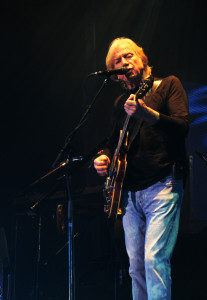
More Than Just a Singer: Hayward plays on at the Mayo PAC in Morristown, NJ, March 5, 2014. Above and below photos by Krista Mettler.
Mettler: It’s good to see you guys resuming your live legacy here in the States in your 50th year as a band. What can we expect from the show this time around?
Hayward: We’re doing things from most of the albums over the years. In the last year or so, we’ve done things we’ve never done onstage, like “You and Me” [from Seventh Sojourn] and “Nervous” [from Long Distance Voyager]. We took a look at our catalog, and we realized how many songs we’ve got that we never, ever played live. We just spent a couple of days in the studio, and then moved on. So that’s been a treasure trove for us. I hope there’s something for everybody.
Mettler: There’s a certain sonic quality we’ve come to expect from a Moody Blues show, which must be foremost in your mind — how that comes across, how the music is presented.
Hayward: It absolutely is. There are great limitations on the building itself — whether it’s conducive to a sweetness of sound, and that’s sometimes frustrating. But I’m a great believer in less is more. I was part of a benefit in San Francisco a few weeks ago for the late Ray Dolby, and it was Jack Vad, the engineer for the San Francisco Symphony, who did the front of house. He was just sensational. When I met him before the show, I said, “I’d like it to be quiet.” And he said, “Oh, I’m so glad you said that.” [laughs] So, yeah, less is more for me, I think.
Mettler: How wonderful Ray Dolby was as an innovator.
Hayward: Oh yes! I didn’t know this until Dagmar Dolby, his wife, shared this with me, but the first Dolby system was put in Decca Studios in West Hempstead [in England], and we were the first group to use it. The only thing I remember from those days was that we had to fill in these forms, and then they’d wheel these big racks into the studio, and you could only have them for a certain time, and then they’d come back and wheel them out again. It changed things forever, and I was very pleased to be a part of that.
And that’s why they’d asked me to be there. I’d just assumed that since he was an American, the system was first used in America, but it wasn’t. She also told me that Decca tried to keep it for themselves. Once it was out of the box, it was impossible to hang onto.
Mettler: Have you been recording any of the shows on the Timeless Flight tour?
Hayward: We did; we recorded one toward the end of last year. I listened to it briefly in the studio last week, but everything’s there. There are some good performances, and it’s tight, so when we get on the bus, I’ll talk about it with the other guys and see what we want to do and release it somehow.
Mettler: Great news. And you’re working on a live Blu-ray and DVD from your 2013 solo tour, right?
Hayward: Yes. I’ve mixed all of the sound, most of the pictures are mixed, and we’re doing a sleeve for it. I’m going to use the same photographer who did my Spirits of the Western Sky album [Marcus Way]. It was a real joy, and a labor of love. I’ve been working with Mike Dawes, who’s just a sensational guitar player. I have to let him do his own half hour before I come on, because you have to see him and hear him. I’m just waiting to see the bonus footage now, because the director had about 8 hours of it, and he’s got to get that down to an hour. It should be out in the next couple of months.
Tags: A Question of Balance, Dansette, Dawn Is a Feeling, Days of Future Passed, Derek Varnals, Every Good Boy Deserves Favour, Graeme Edge, In Search of the Lost Chord, John Lodge, Justin Hayward, mellotron, Mike Dawes, Mike Pinder, On the Threshold of a Dream, Question, Ray Dolby, Ray Thomas, Spirits of the Western Sky, The Moody Blues, The Other Side of Life, Timeless Flight, To Our Children's Children's Children, Tony Clarke, Your Wildest Dreams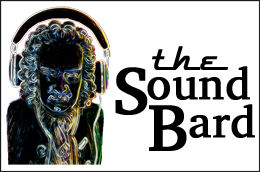

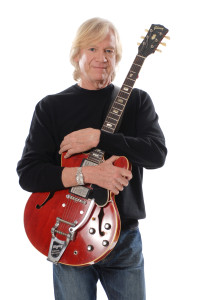
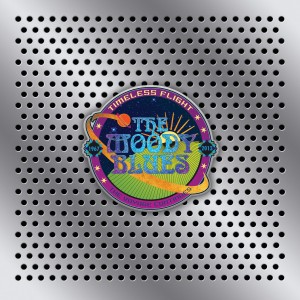
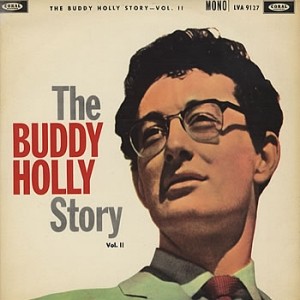
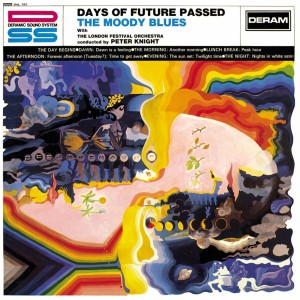
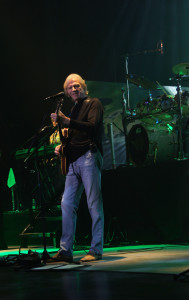
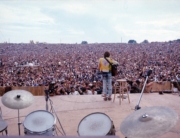
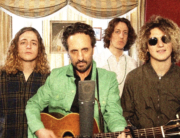
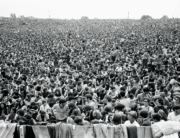
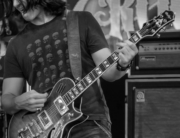
Excellent interview, Sound Bard. Lovely to revisit origins and applaud the engineers who contributed so much to the Moody Blues oeuvre at the onset. It was a labor of love and an assembly of like minds that transported us in the 60s and has kept us charmed to this day. The Timeless Flight tour is tweaked a bit to resurrect a few of the old numbers … and periodically the tunes are reshuffled. Each one still sounds fresh and urgent. Particularly pleasing are the guitar highlights that have been reworked and switched up. Justin plays like no one else. He is superb, one with whatever guitar he holds at the time … together they create magic. Hail the red Gibson! Thank you for this satisfying read. Very pleased to learn the Spirits of the Western Sky DVD is close to release. All the more reason to anticipate May and the 2nd leg of the solo tour.
Thanks Mike for the great interview with Justin Hayward and the behind the scenes with the group, engineers and even Ray Dolby. I’ve seen the Moody Blues many, many times over the years in six states with and without the orchestra. I’ve been a fan since 1972 and felt their music had a LOT of depth that was and still is rare. Their lyrics and music have held up over the years and I appreciate the songs even more after all of the listenings and time. I need to get the 5.1 releases now. I also very much enjoy your Christmas album too. I’m not up on every guitarist or guitar but Justins electric guitar sound is unique and always want to hear more of it. Congratulations Moody Blues on your 50th anniversary! I caught you in concert last year in Cincinnati and twice previously in Knoxville for other great evenings. Thank you Moody Blues! … I’m just a listener of the singers in a rock and roll band!